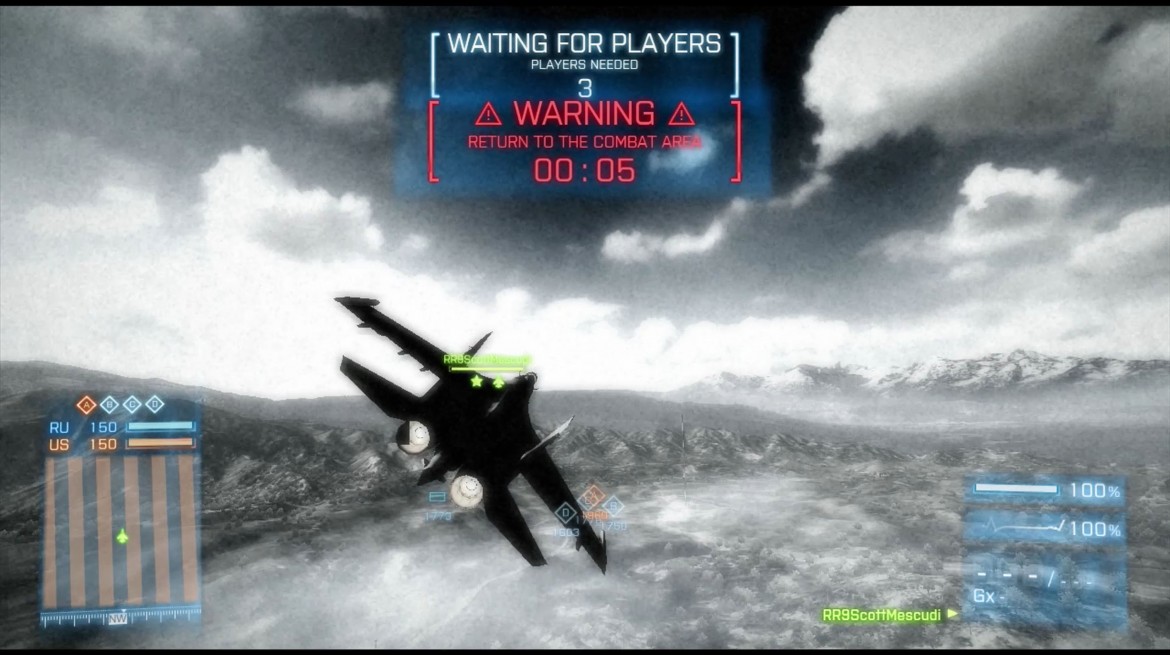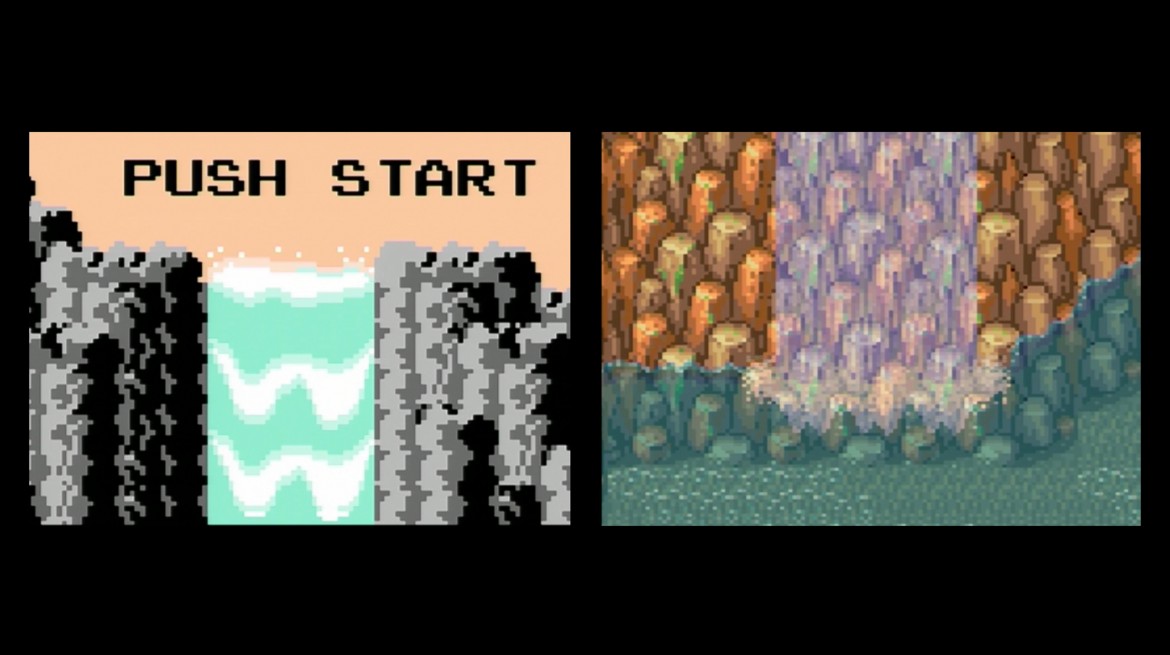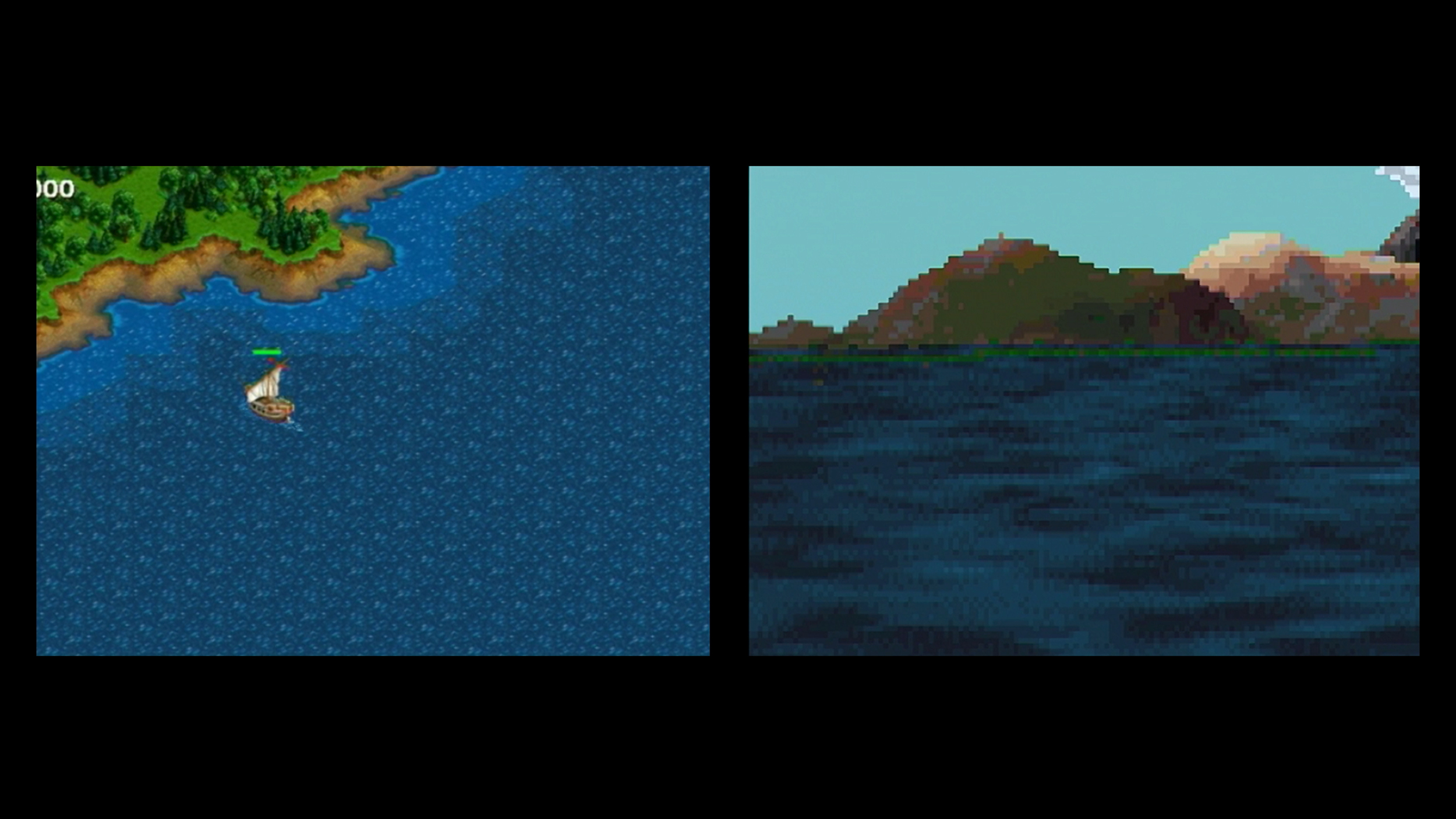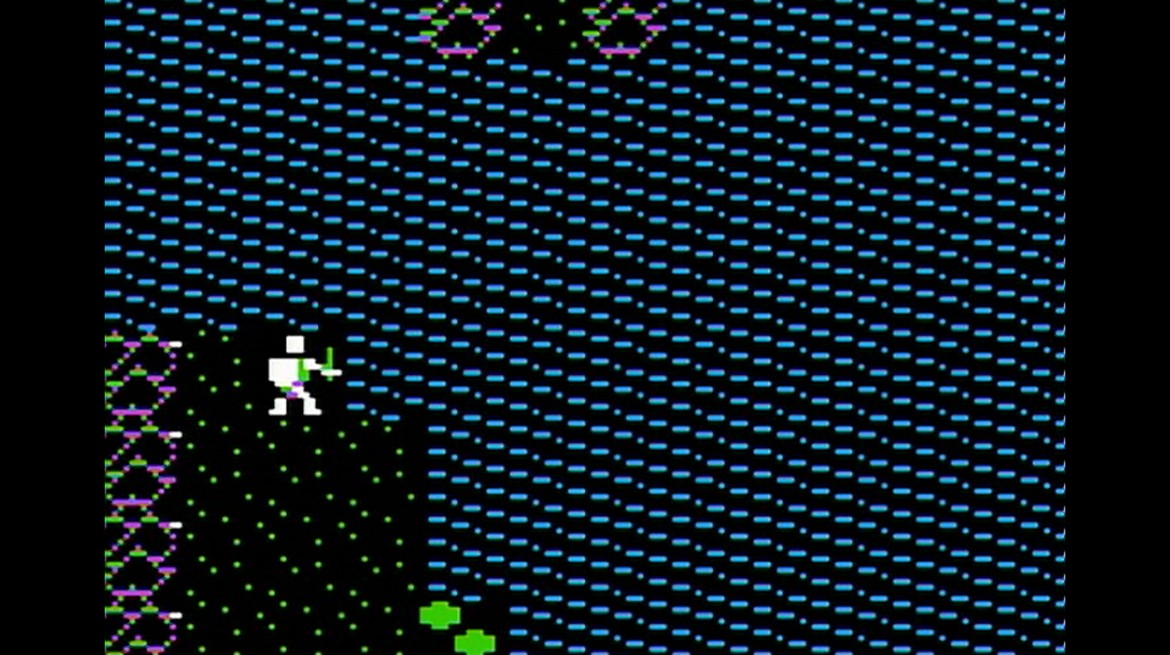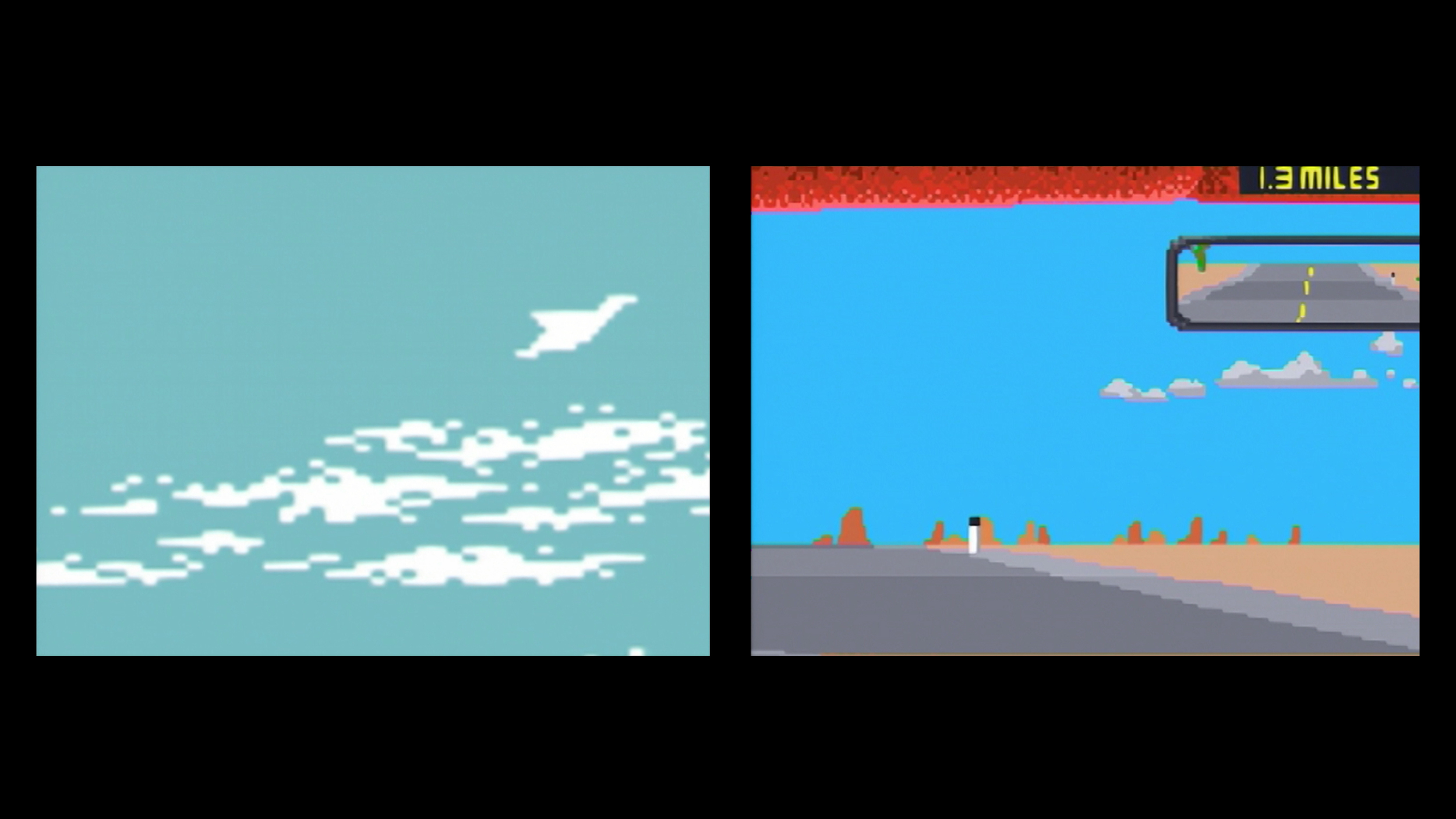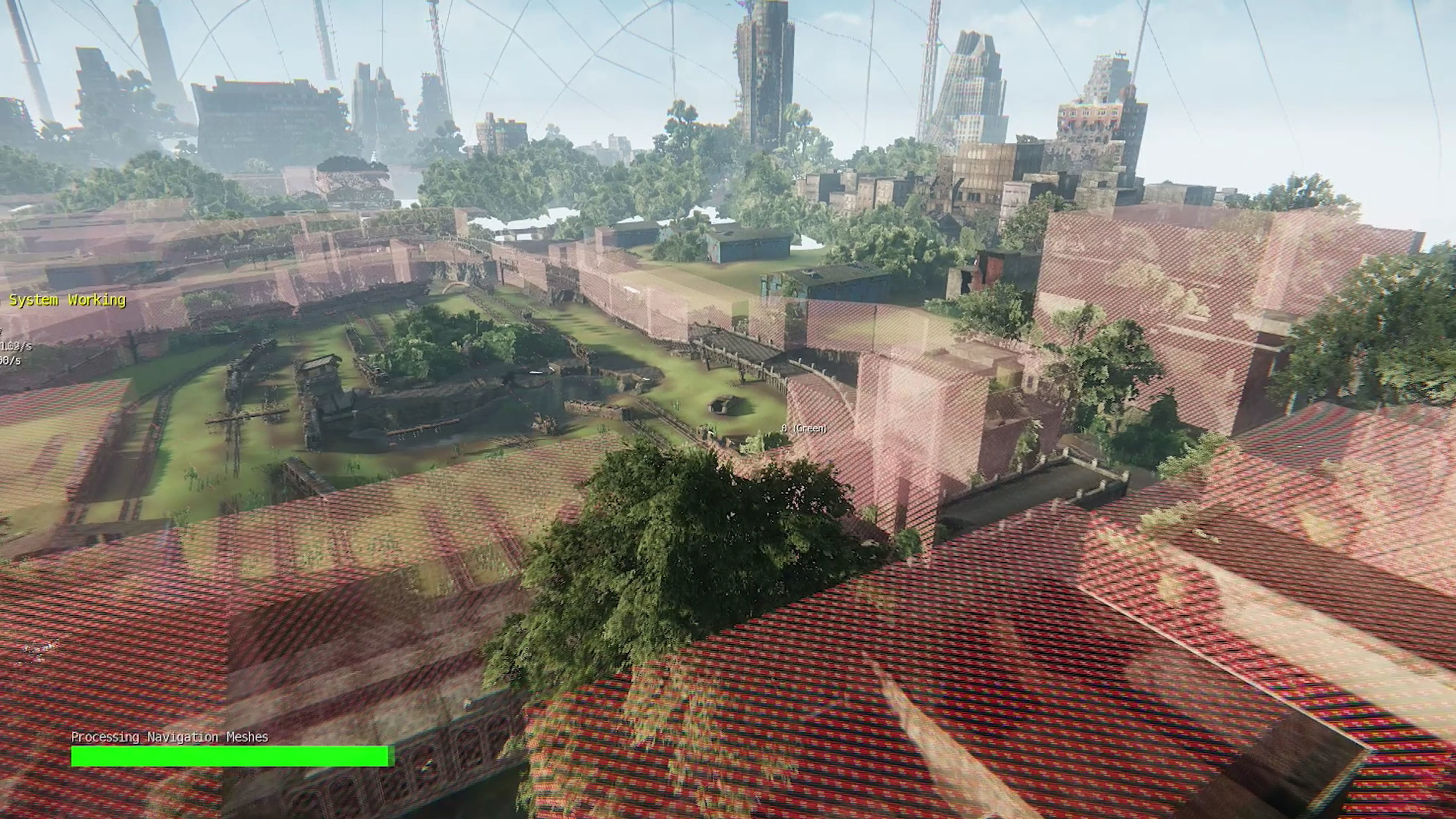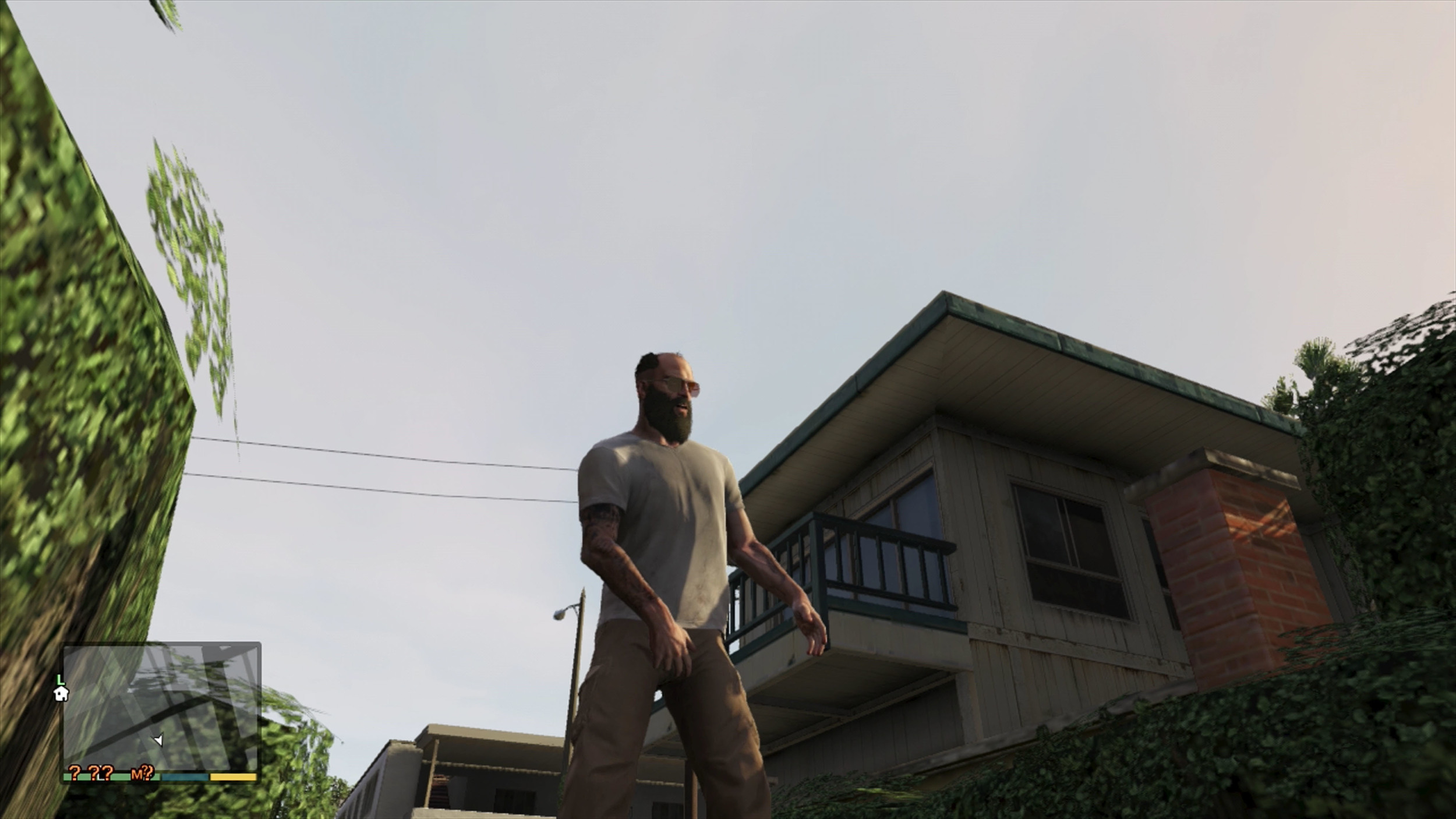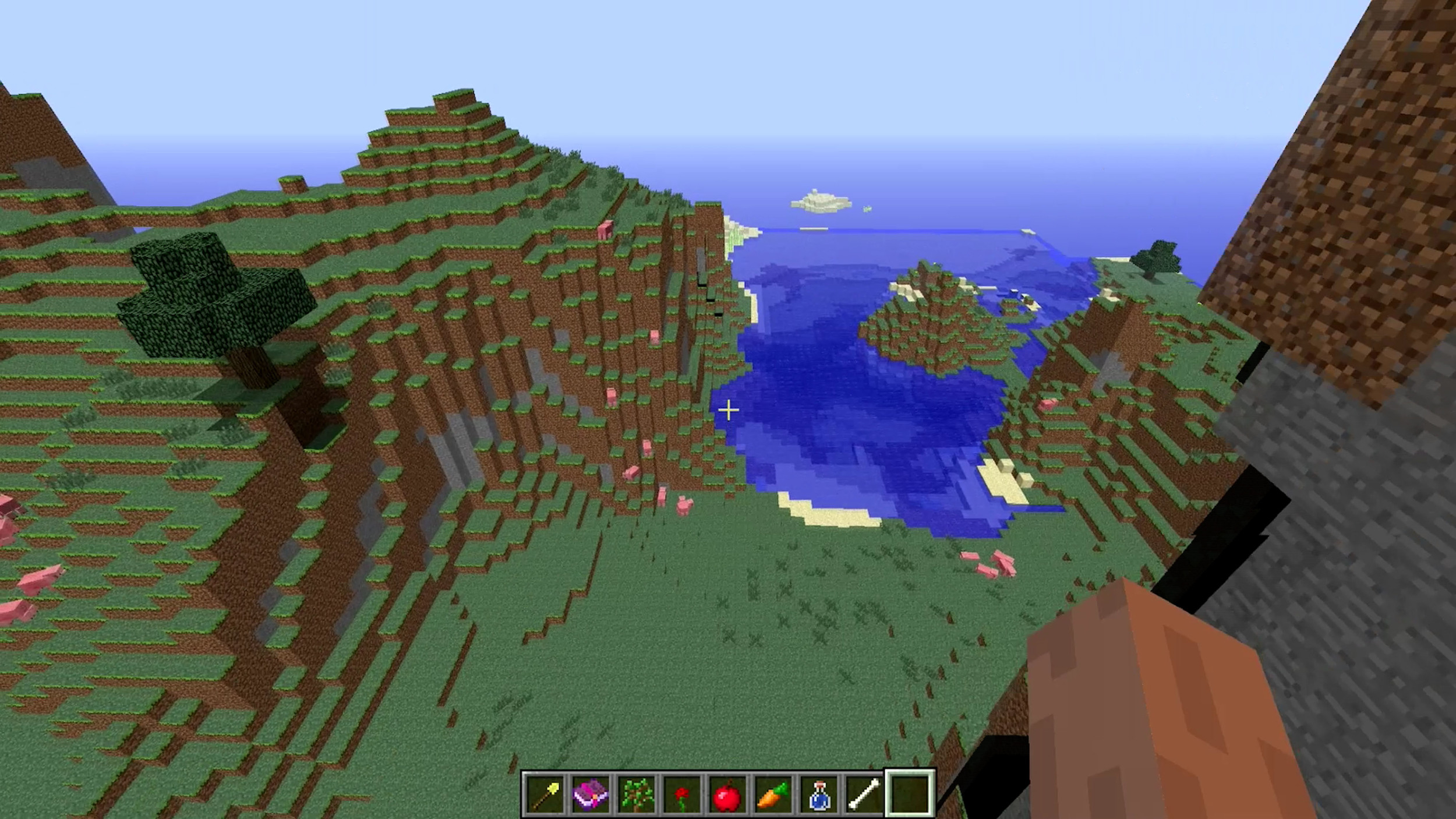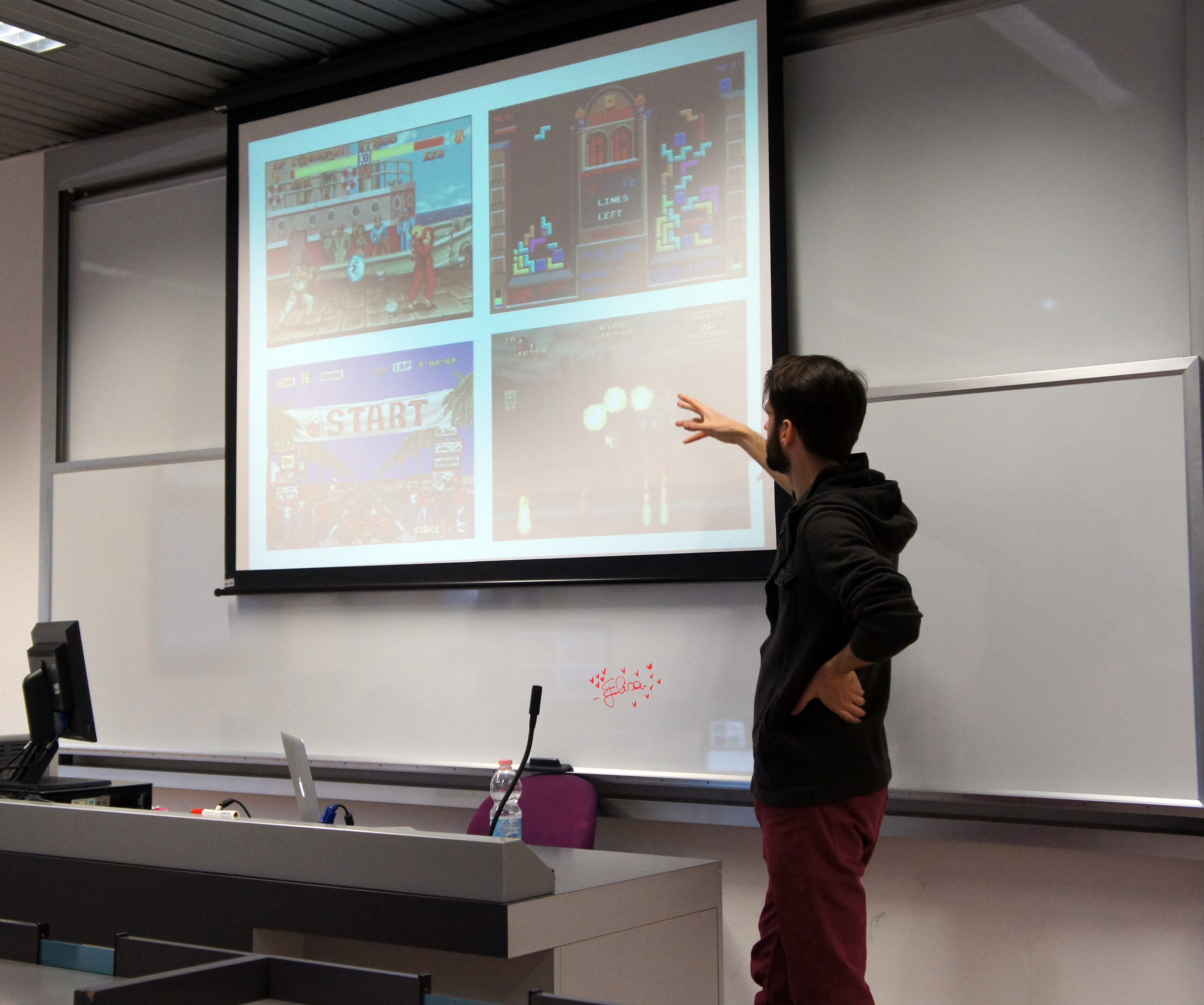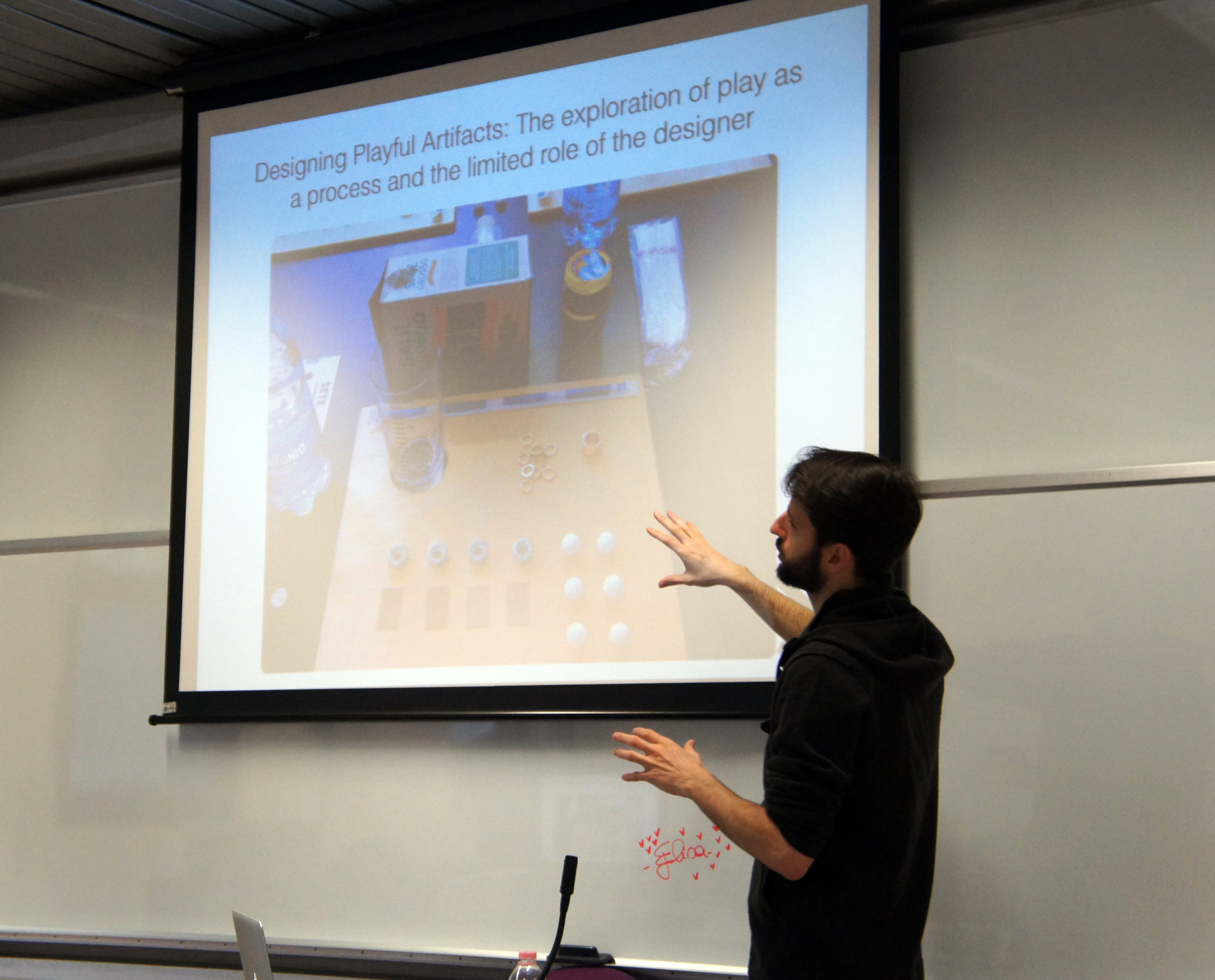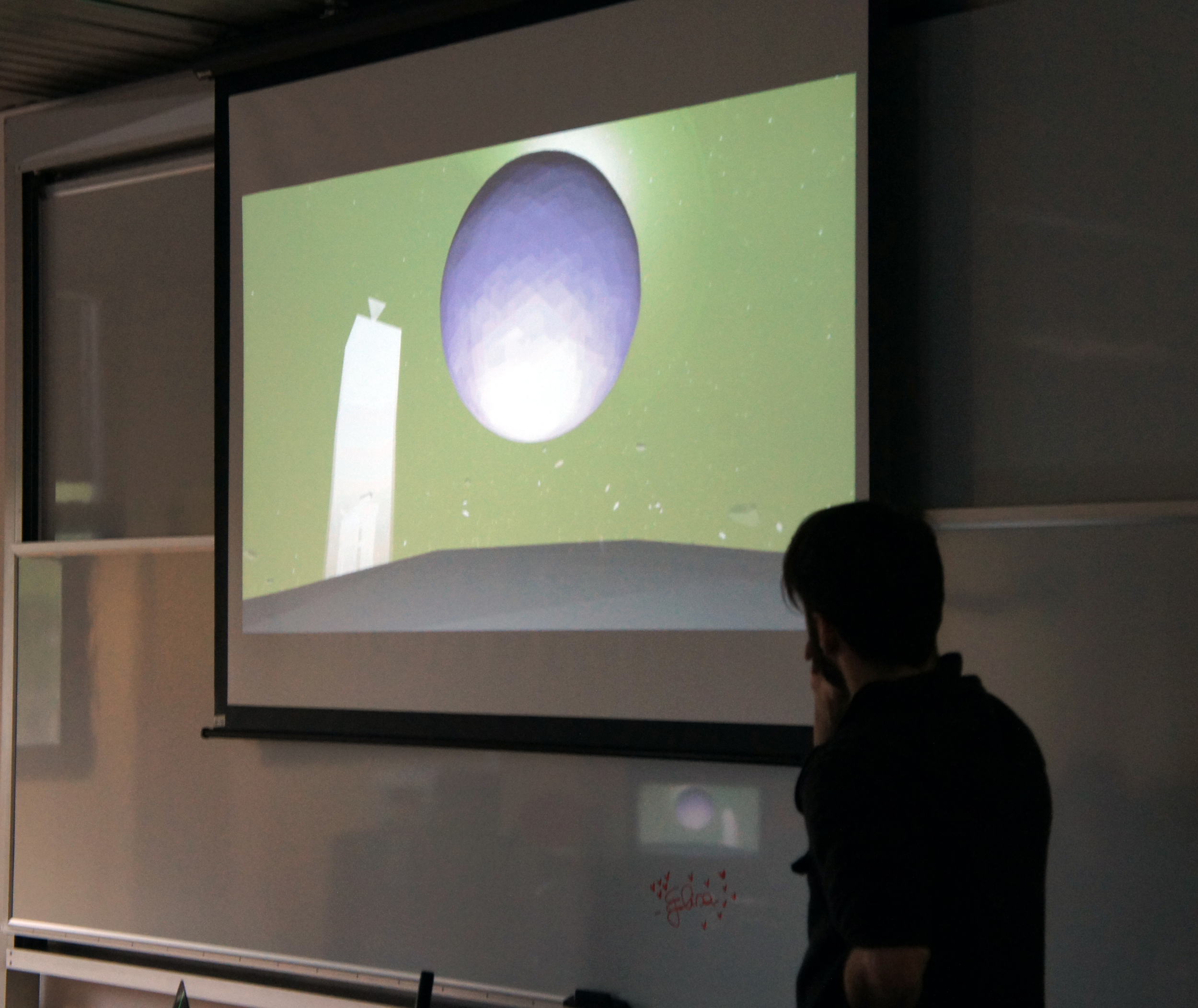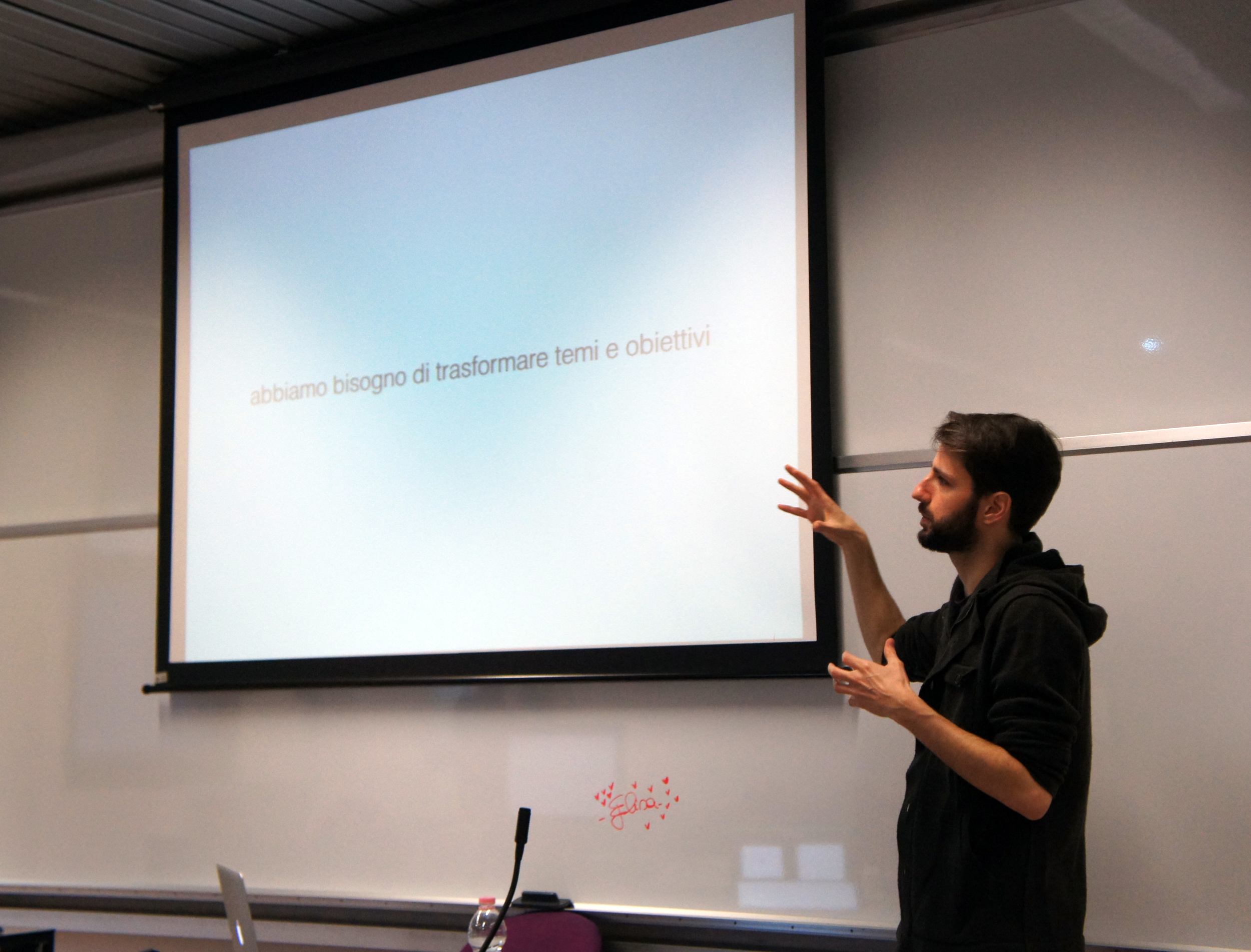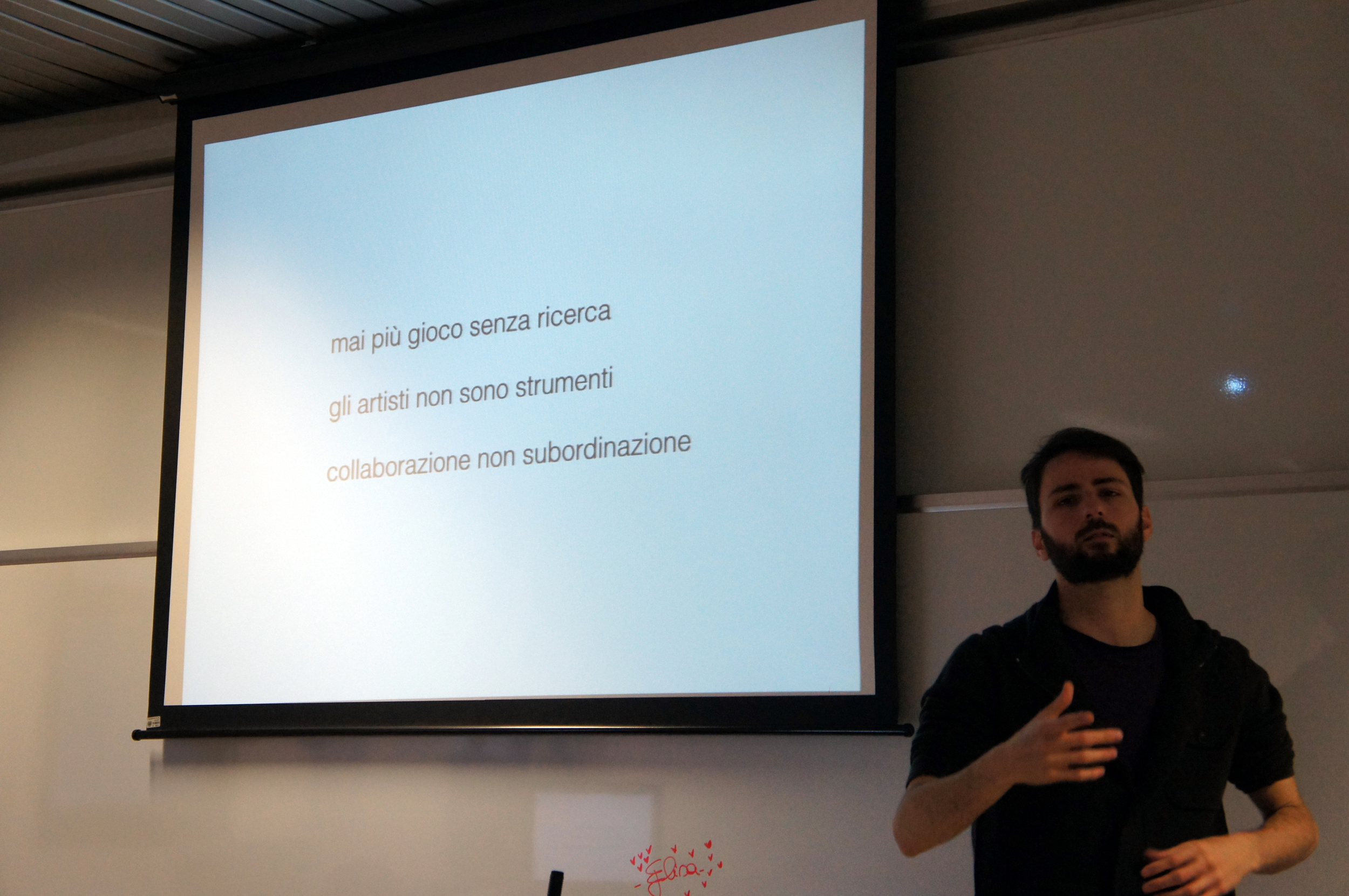FOCI + LOCI INTERVIEW
Treating map editors FOUND In video games as virtual sound stages, foci + loci create immersive electro-acoustic spaces with virtual instruments and timed audiovisual events.
foci + loci (Tamara Yadao and Chris Burke) are a duo living and working in New York. Saving and replaying digital game data, camera movement in space can be disassociated from time, changing traditional filmic relationships. They are are interested in exploring the topological treatment of time and space afforded by game engines. They received a NYSCA grant in 2013 for their game performance installation Bal(l)ade and have given workshops at 8static in Philadelphia, the Babycastles Summit at the Museum of Arts and Design (NYC) as well as lecturing on game sound and mashup culture at the Polytechnic Institute of New York University and the New School. Among others, Chris and Tamara have performed at Babycastles, Centre Pompidou, Cluster New Music festival, CultureHub, DistENDed Cinema at Outpost, Diapason Gallery, Peter Kirn’s Handmade Music series, Joe’s Pub, Secret Project Robot, The Stone, Vector Game + Integrated Arts Festival in Toronto and Game Play Festival 2011 at the Brick Theater in Williamsburg, Brooklyn.
Lebbeus Woods is a video capture of performable game space, part of what foci + loci call "time-based virtual architecture".
The video interview was produced by the students of IULM's Master's Program in Arts, Markets, and Cultural Heritage. Editing and Subtitles: Mariacristina Maffeo
foci + loci' F.T. Mari0netti is currently on display in the ASSEMBLAGE level of GAME VIDEO/ART. A SURVEY.
fociloci
EVENT: HARUN FAROCKI, PARALLEL I-IV (MAY 18, 2016)
IULM University is proud to present Harun Farocki's masterpiece, Parallel I-IV.
SCREENING: HARUN FAROCKI, PARALLEL I-IV (2012-2014)
DATE & TIME: MAY 18, 2016, 6 - 8 PM
PLACE: IULM 6, CONTEMPORARY EXHIBITION HALL
FREE AND OPEN TO THE PUBLIC
PLEASE RSVP (WRITE "FAROCKI SCREENING" IN THE SUBJECT LINE - LIMITED SEATING)
________________________________
The four‐part cycle charts the evolution of computer game graphics over 30 years, focusing on the construction, visual landscape and inherent rules of computer-animated worlds.
“Computer animations are currently becoming a general model, surpassing film. In films, there is the wind that blows and the wind that is produced by a wind machine. Computer images do not have two kinds of wind.” (Harun Farocki)
"This series continues the late filmmaker’s long-standing investigation into the rise of calculable, actionable images possessing a relationship to reality very different than that of the cinema before them. Tracing the evolution of video game graphics from the two-dimensional schematics of the early 1980s to the photorealistic environments of today, Farocki foregoes the obsession with novelty that too often characterizes discussions of so-called “new” media, instead situating games within a longer history of representation. The Parallel series is a major achievement that exemplifies a key attribute of a singular practice cut far too short: Farocki joins poetic speculation with analytical strength to call upon the viewer not simply to look and listen carefully, but also to think along with him." (Erika Balsom, ARTFORUM, November 2014)
THE EVENT WILL FEATURE A CRITICAL INTRODUCTION
FULL PROGRAM
Parallel I (2012, 15’ 53”)
Parallel II (2014, 08’ 38”)
Parallel III (2014, 07’ 21”)
Parallel IV (2014, 11’ 20”)
PRESENTATION SHOTS: PIETRO RIGHI RIVA (05/13/2016)
Philip Solomon, EMPIRE (2008-2012), digital video, color, sound. Photo: Courtesy of the Artist
THE AESTHETICS OF SLOW MACHINIMA (2 of 4)
PRESS PAUSE: FROM SLOW MACHINIMA TO STATIC MACHINIMA. UNDERSTANDING PHILIP SOLOMON'S EMPIRE.
"It takes close attention to see what is happening in front of you. The less there was to see, the harder he looked, the more he saw” (Don DeLillo, Point Omega)
In my previous blog post, a week ago, I sketched out some of the ways machinima is evolving and I described what I am calling - with a nod to film theory and criticism - “slow machinima”. Although these productions do not form any kind of unified genre, school, or movement they do share several common traits. For example, they all appear to be generally indifferent or deliberately antagonistic to mainstream game audiences, and perhaps, to mainstream audiences in general. In their explicit refusal to adhere to the conventions of popular genres - e.g. comedy, sci-fi, and horror - a handful of directors have chosen to explore alternative visual strategies featuring long takes, sparse narrative, minimal camera movement, editing, and dialogue. These auteurs operate in the gray area separating cinema, animation, gaming, and performance art, contributing in their own way to blur the boundaries of each practice. I argued that this certain formal trend in contemporary machinima can be seen as an act of cultural resistance, a resistance to speed, frenzy, and acceleration. Finally, I clarified that, in terms of presentation, distribution, and circulation, slow machinima diverges from the dominant fandom productions insofar as these artifacts are not usually uploaded on popular video sharing websites such as YouTube or Vimeo, but mostly distributed through artworld channels. Slow machinima prefers dark projection rooms to bright smartphone screens, art galleries' white walls to laptops.
As I will explain in the next few weeks, slow machinima is not monolithic. There is slow machinima. There is also slower machinima: deceleration can be quite dramatic. Such is the case of Philip Solomon’s EMPIRE (2008-2012). To discuss this particular work, I am borrowing Justin Remes’s (2015) definition “cinema of stasis”, which he uses to refer to those “films in which stasis—not motion—is the default.” In his extended study of Andy Warhol, Derek Jarman, and Michael Snow, among others, Remes argues that static films occupy a special place in film history as they lie at the intersection of several different genres and media, e.g. painting and photography. As Remes writes, “Static films offer radical challenges to conventional conceptions of cinema, since they are ostensibly motion pictures without motion.” He adds that “these films foreground stasis and consequently blur the lines between traditional visual art and motion pictures.” Additionally, these cinematic productions address Walter Benjamin’s observation about the screen vs. canvas dichotomy. In his most famous essay, “The Work of Art in the Age of Its Technological Reproducibility" (1936) Benjamin writes: “The painting invites the viewer to contemplation; before it, he can give himself up to his train of associations. Before a film image, he cannot do so. No sooner has he seen it than it has already changed. It cannot be fixed on.” Static machinima, like its cinematic counterpart, defies conventional conceptions of video games, since, static machinima is, ostensibly, a video game without motion. As such, it has a photographic (or even painterly) nature, which in turn can accomodate a (more) contemplative viewing. But to argue that static machinima is a mere remediation of photography or painting is to ignore its formal complexity and reception modalities.
I would like to use Remes’s incisive analysis of Andy Warhol’s Empire as a starting point to discuss Philip Solomon’s EMPIRE, as the two works are overtly intertwined. Solomon’s EMPIRE is not quite a re-enactment but, rather, a replay of a seminal performance (1). On the night of July 25–26, 1964, Andy Warhol and Jonas Mekas filmed the Empire State Building using an Auricon camera. They shot from the 41st floor of the Time-Life Building, and specifically from the offices of the Rockefeller Foundation. The film was shot at 24 frames per second but is projected at 16 frames, so that, even though only about 6 hours and 36 minutes of film was made, the duration of the screening is about 8 hours and 5 minutes long. The resulting eight hours and five minutes of continuous slow-motion, black and white footage of this towering, phallic structure became known as Empire.
Almost half a century later, Solomon filmed the Rotterdam Tower, i.e. the skyscraper's virtual equivalent in Liberty City, the simulated metropolis of Grand Theft Auto IV. As Genevieve Yue (2012) wrote in Film Comment,
“EMPIRE” [...] amounts to a full day, passing through rain, sunset, night, and, come the following afternoon, the return of stormy weather.. [...] Perched on a skyscraper ledge, in an elaborate choreography of avatar, camera, and encoded “cheats,” Solomon allows us to gaze, as Warhol did, at the building across the way: “Rotterdam Tower,” or what is more recognizable as the Empire State Building."
Remes argues that Warhol’s main goal in filming Empire was “to see time go by.” I experienced something similar at a screening of Solomon’s EMPIRE in New York circa 2012. In his monograph on Andrei Tarkovsky's 1979 sci-fi film Stalker, Zona: A Book about a Film about a Journey to a Room, Geoff Dyer (2012), observes that "every second [of Antonioni’s L’avventura] lasted a minute, every minute lasted an hour". Something similar can be said of Philip Solomon’s EMPIRE: although his homage lasts 48 minutes vs. the 485 minutes of the “original” it feels equally long and gloriously “uneventful”. After all, in the world of Grand Theft Auto, a minute of gameplay corresponds to one hour in the real world. In other words, although the duration of Solomon’s EMPIRE is significantly shorter than Warhol’s Empire, the viewing experience is no less disconcerting for 21st century audiences with extremely limited attention span, prone to smartphone-driven distractions, and generally terrified of ruminative, meditative situations. The real subject of Solomon's film is not "action", but time. As Remes explains, “The spectator of a film like [Warhol’s] Empire witnesses movement: not the movement of the building on the screen but the movement of time itself.” He adds:
By foregrounding stasis, films like Empire actually make the spectator more aware of the movement of time and consciousness, neither of which can be apprehended in the same way when one is absorbed in the movement of a cinematic image.
Since time is invisible and intangible, to watch Empire is to become conscious of time as it is being perceived by our consciousness: “Although Warhol’s Empire State Building is essentially immutable, my conscious experience of it is not”. Here consciousness is to be understood not only as a psychological process, but also in political terms. Think of the notion of “false consciousness”, an expression used by Marxist thinkers to describe the way in which material, ideological, and institutional processes in capitalist societies mislead members of the proletariat and other class agents. Unsurprisingly, Remes wonders if Empire could be considered a profoundly subversive film:
Is Warhol’s goal to counter the capitalistic equation “Time equals money” by offering a space in which time can be observed, felt, and reflected upon rather than hurriedly “spent”? (Remes)
If Remes's hypothesis is correct, can the same be argued in the case of Solomon’s EMPIRE? That is: by slowing down the pace of a game to (almost) zero, is Solomon rejecting the game's categorical imperative, i.e. to acquire enormous amounts of wealth, as fast as possible, by any means necessary? And if Grand Theft Auto represents the medium of the video game, is Solomon rejecting the ideology of gaming in its entirety? I would like to clarify that by "games" I do not mean a form of electronic escapism that is particularly popular among teenagers of advanced societies. I am referring to games as a metaphor, as an organizing principle, as a dominating narrative. My frame of reference is Michel Foucault's lectures on neoliberalism, especially where he writes about the rhetoric of the marketplace as a "game":
Both for the state and for individuals, the economy must be a game: a set of regulated activities ... in which the rules are not decisions which someone takes for others. It is a set of rules which determine the way in which each must play a game whose outcome is not known by anyone.
One must remember that the ideology of gaming - with its algorithms, programmed behaviors, and bots - today functions as the Operating System (OS) of society. Thus, to reject gaming is to reject techno-driven, neoliberalism, whose "heroes" - Wall Street traders - are much more criminal and ultimately violent than the protagonist of Grand Theft Auto. In fact, their nefarious acts have a broader, wider, deeper and more tangible impact than Bellic's. Wall Street traders are not only more dangerous than the game's criminals, but also invulnerable, since no matter how much damage, trouble, and pain they inflict on society, they will never prosecuted as their actions are protected, justified, and endorsed by the very governments that are supposed to regulate their conduct in the first place. Consider these passages from Douglas Rushkoff’s (2016) most recent book, Throwing Rocks At the Google Bus, which compare algorithmic trading to an ever accelerating, self-destructive game between non-human agents:
[Wall Street] is a game being played between algorithms exploiting the trading protocols. It has nothing to do with providing capital to growing companies, and everything to do with extracting value from the investment economy by undermining the very premise of open markets. It is gaming the system. For the trader, the massive amounts of data and processing capabilities unleashed by digital technology are important only insofar as they offer new ways of strategizing moves in the game. Those who play in this space, from individual technical traders to the operators of algorithmic programs, feel they have gotten into the very core of the game—the rule writing itself. The stock market—already an abstraction of commerce—was swallowed by its own abstraction. Indeed, the more that algorithms dominate the marketplace, the more the market begins to take on the properties of a dynamic system. It’s no longer a marketplace driven directly by supply and demand, business conditions, or commodity prices. Rather, prices, flows, and volatility are determined by the trading going on among all the algorithms. Each algorithm is a feedback loop, taking an action, observing the resulting conditions, and taking another action after that. Again, and again, and again. It’s an iterative process, in which the algorithms adjust themselves and their activity on every loop, responding less to the news on the ground than to one another. [...]
We are not witnessing momentary crises in the capitalization of business; we are watching a high-stakes video game among the nonhuman players of the wealthiest investment houses. At best, we humans are carried along for the ride. The economy is less a place to create value than a system to game. Hell, everyone in finance and banking is already gaming the system, extracting money from what used to be the simple capitalization of business ventures. Why not create business ventures that game the gamers at their own game? (emphasis added)
In Solomon's EMPIRE, Liberty City/New York, the world’s financial center, the city that never sleeps, a place in constant motion, is slowed down until it reaches a quasi-standstill. The accelerated circulation of images is slowed down. The flow of capital is frozen. By creating a rather uneventful scene - although events do take place (2) - Solomon forces the viewer to see better, to see more, to pay close attention to what's happening (and not happening) in the frame.
In short, to feel time, not as money, but as time in itself.
PREVIOUSLY: THE AESTHETICS OF SLOW MACHINIMA (1 of 4)
NOTES
(1) As I wrote elsewhere (COLL.EO, 2015), a replay “is not meant to dematerialize the “original” artistic experience, but to reframe and recontextualize it.” Additionally, a “replay does not strive for historical accuracy either. Its function is not to affirm the past, but rather to question the hic et nunc by re-staging events, situations, and conditions.”
(2) As curator Chris Stults (2008) wrote in a text accompanying a screening of Empire at the Wexner Center for the Arts:
While it leaves the “action” of GTA far below, there are a dazzling number of events that occur continually that create sensation somewhere between meditation and entertainment. Whether it’s shifting color gradations or subtleties of lighting or the expressionist blurs of rain on “lens” or debris wafting in the path of airplane flight patterns, there is always something to hold the eye while awakening the mind. “EMPIRE” celebrates and subverts the basic operating systems of the game so much that a revision of the game’s title seems in order. Let’s call it Grand Zen Auto.




